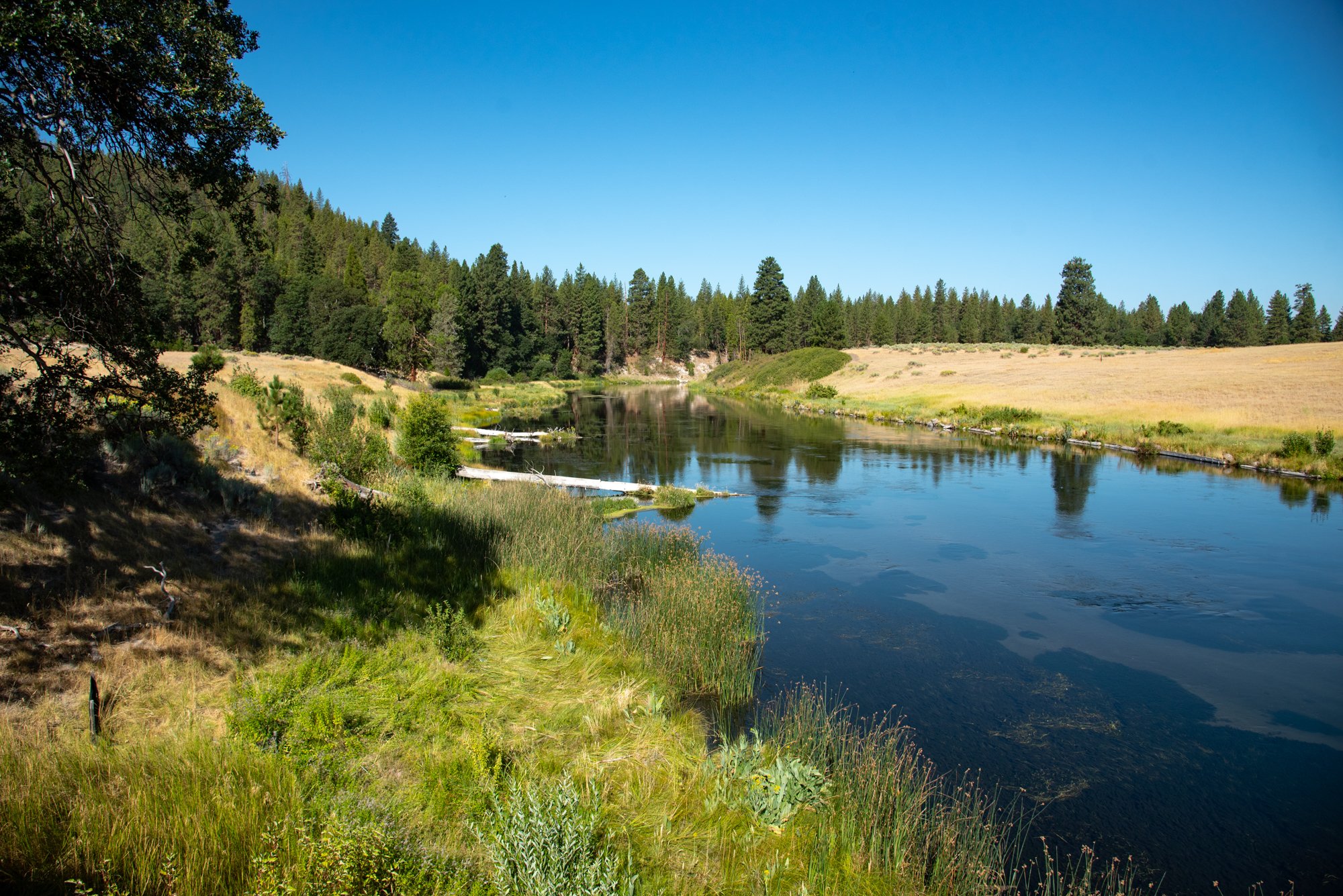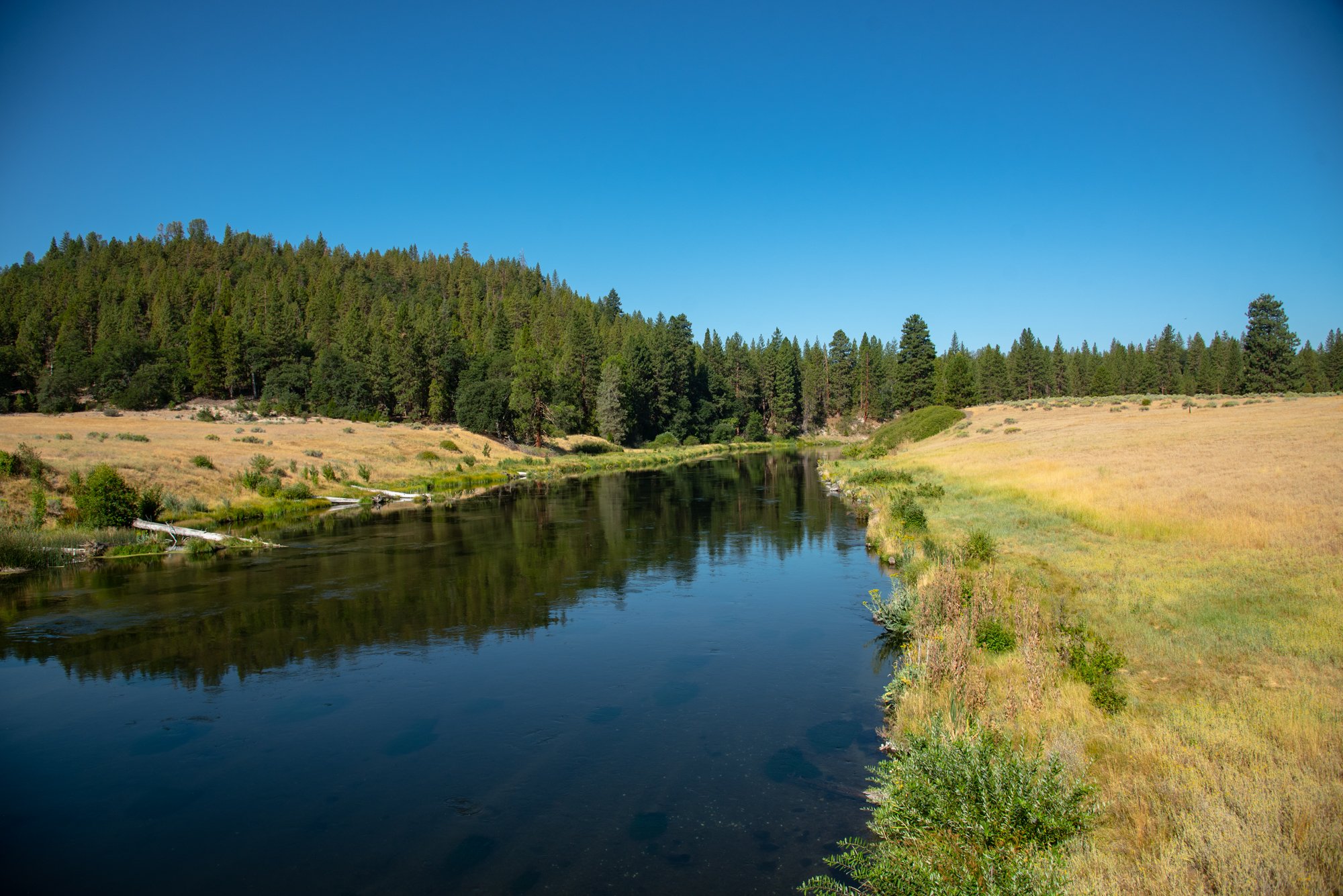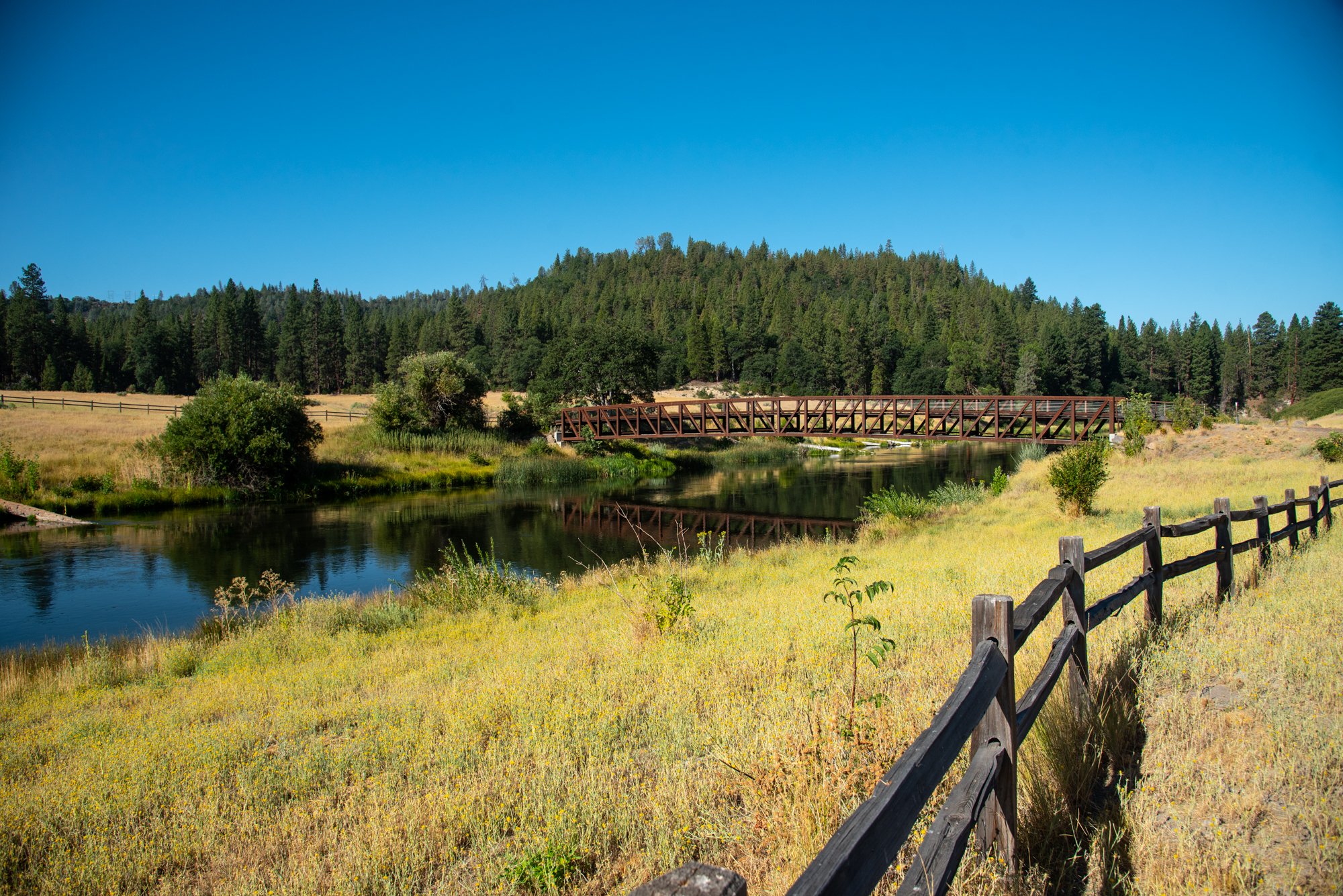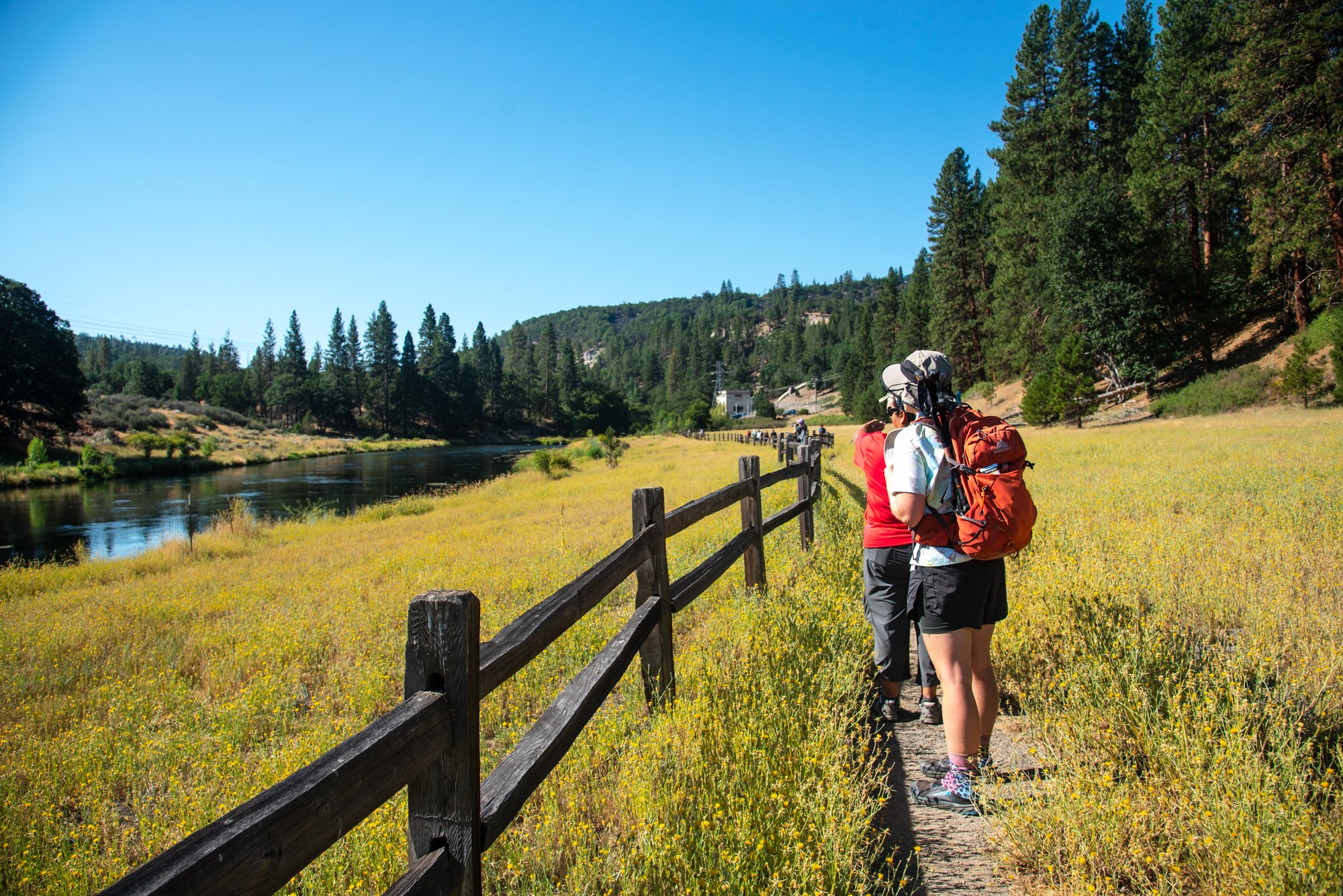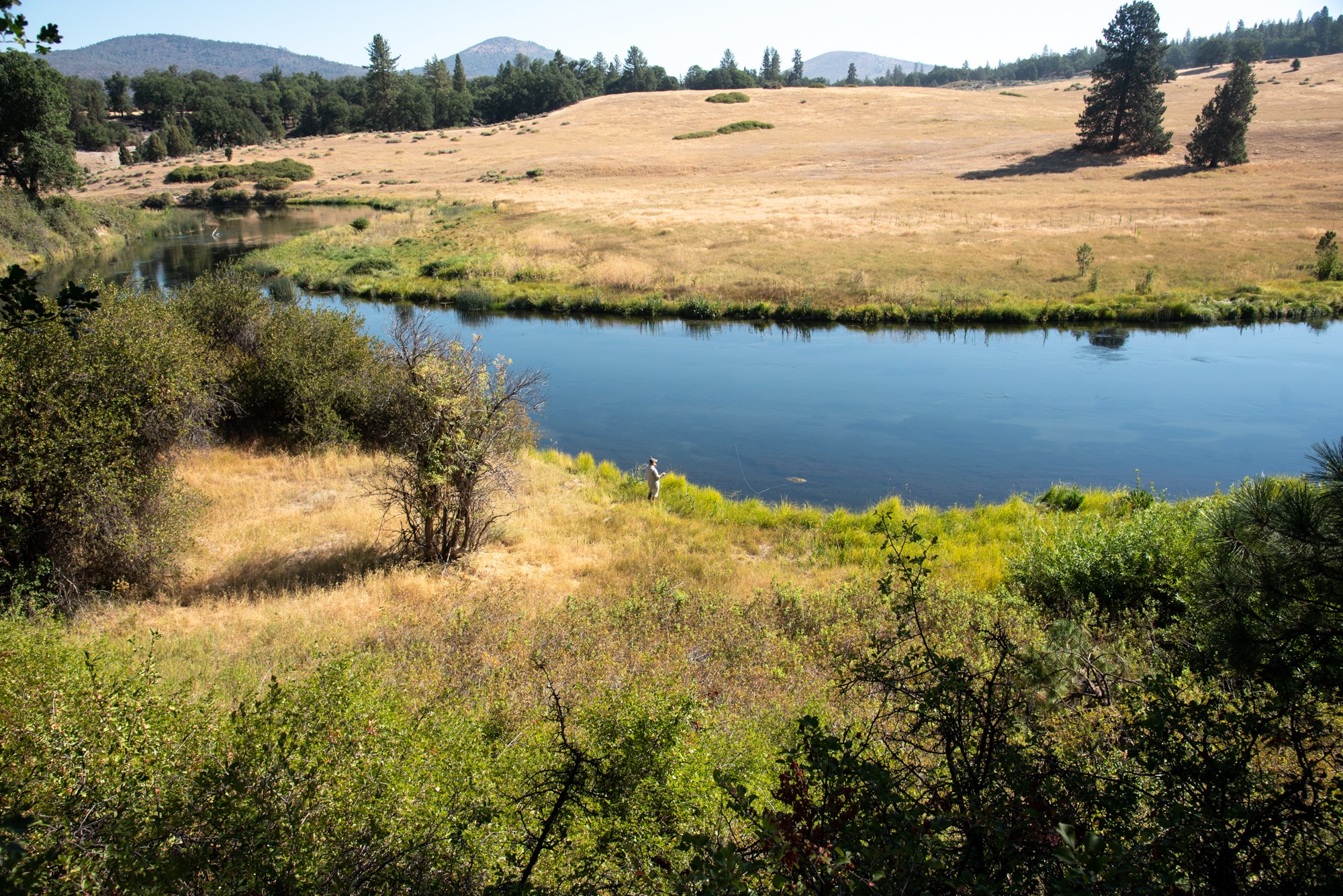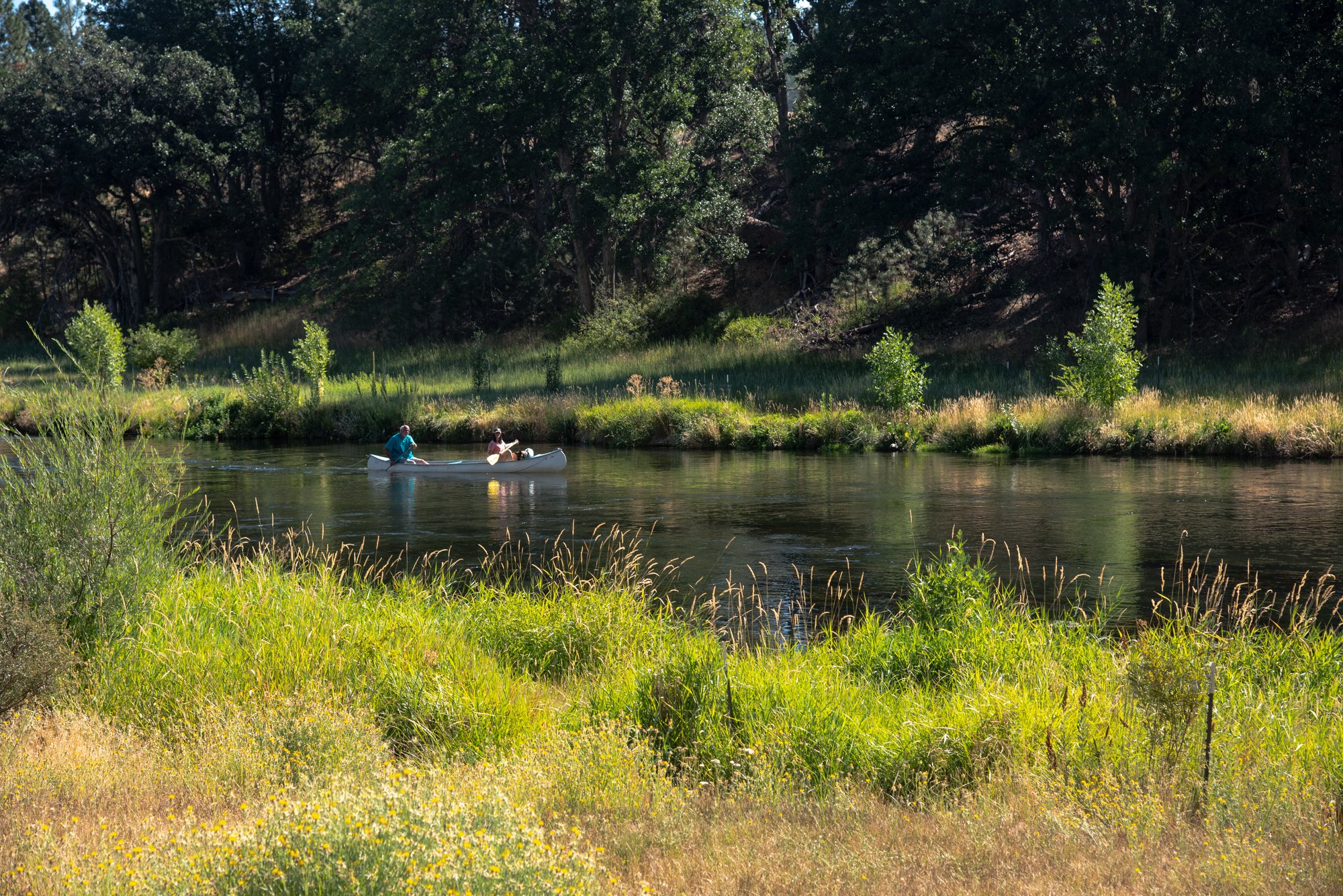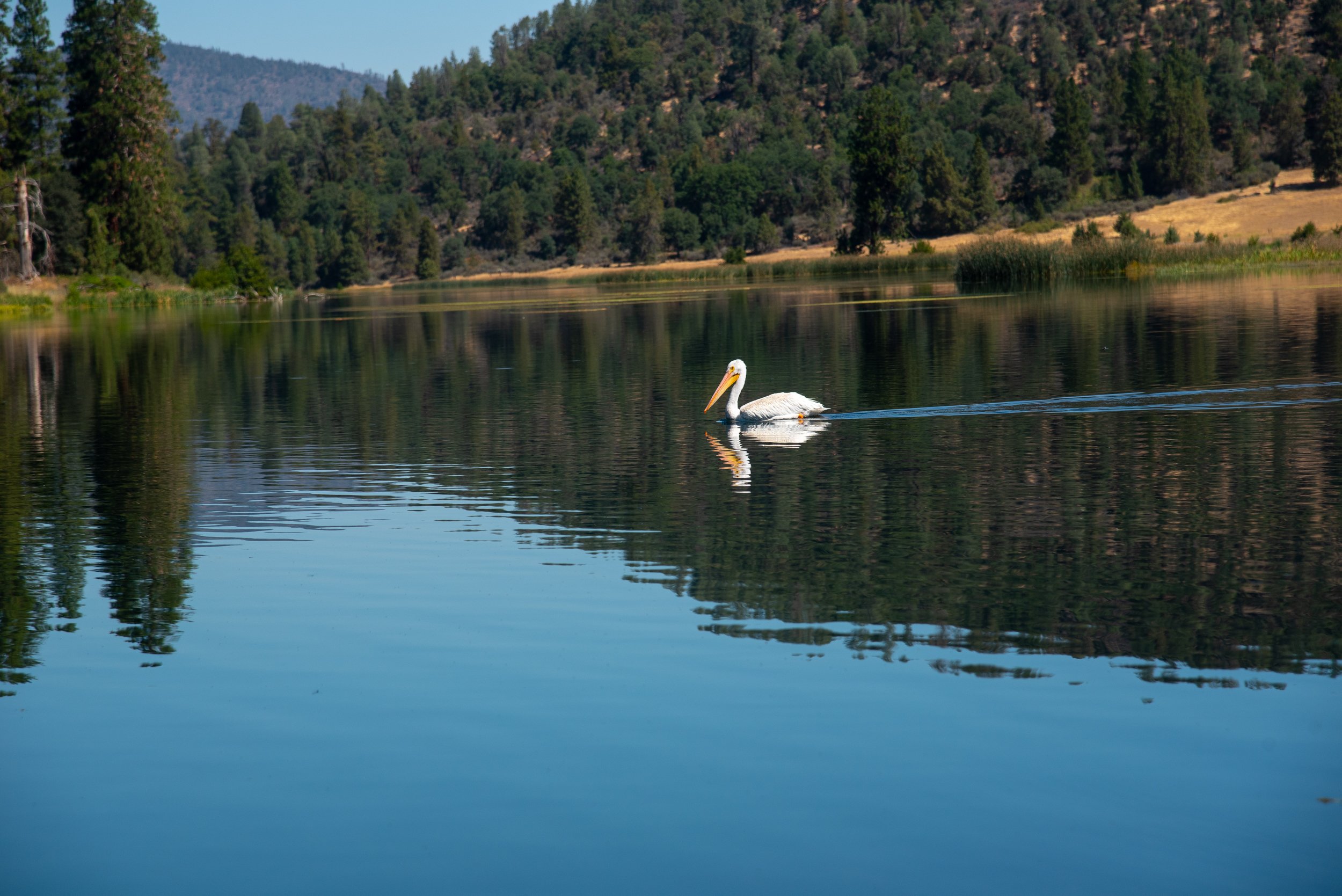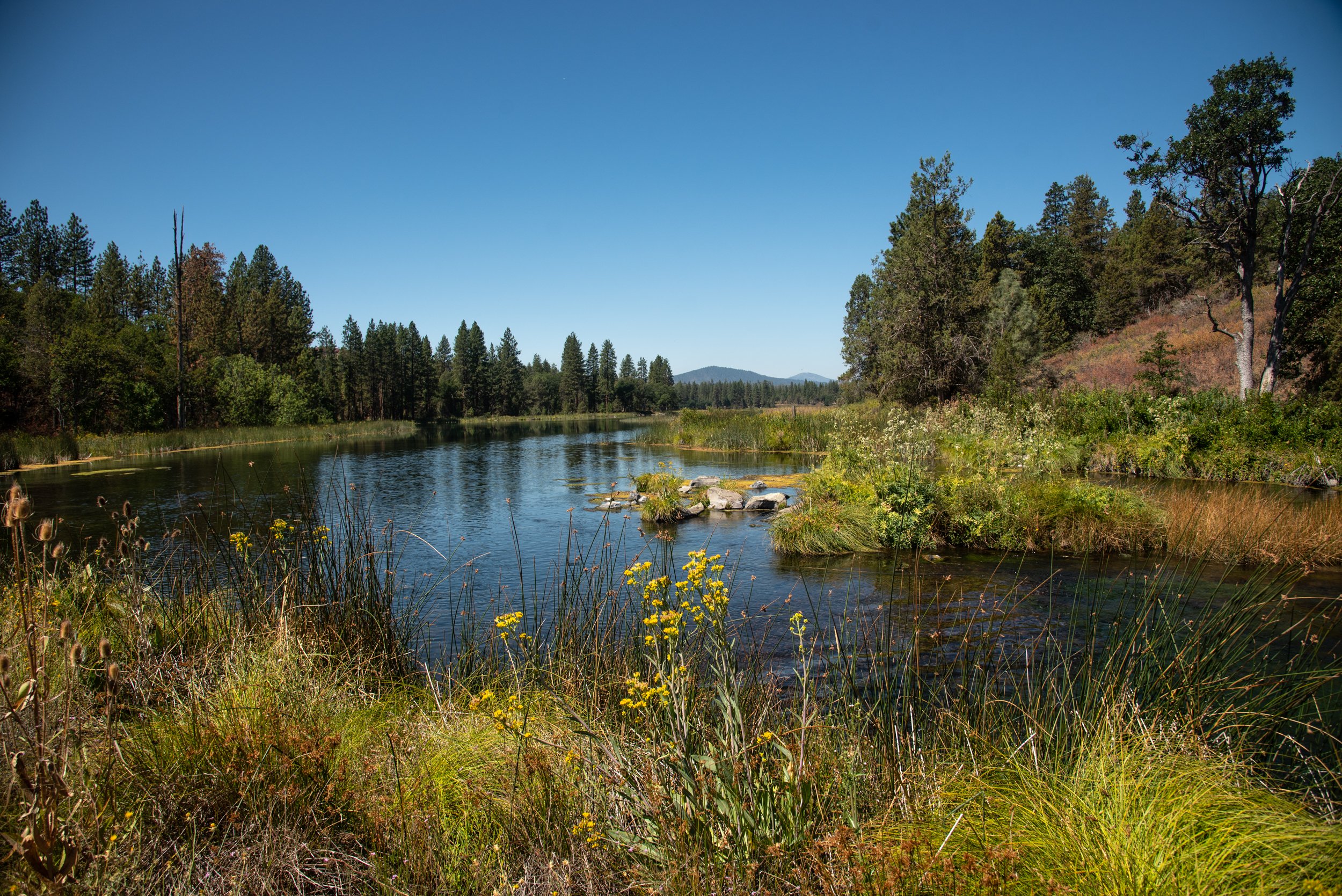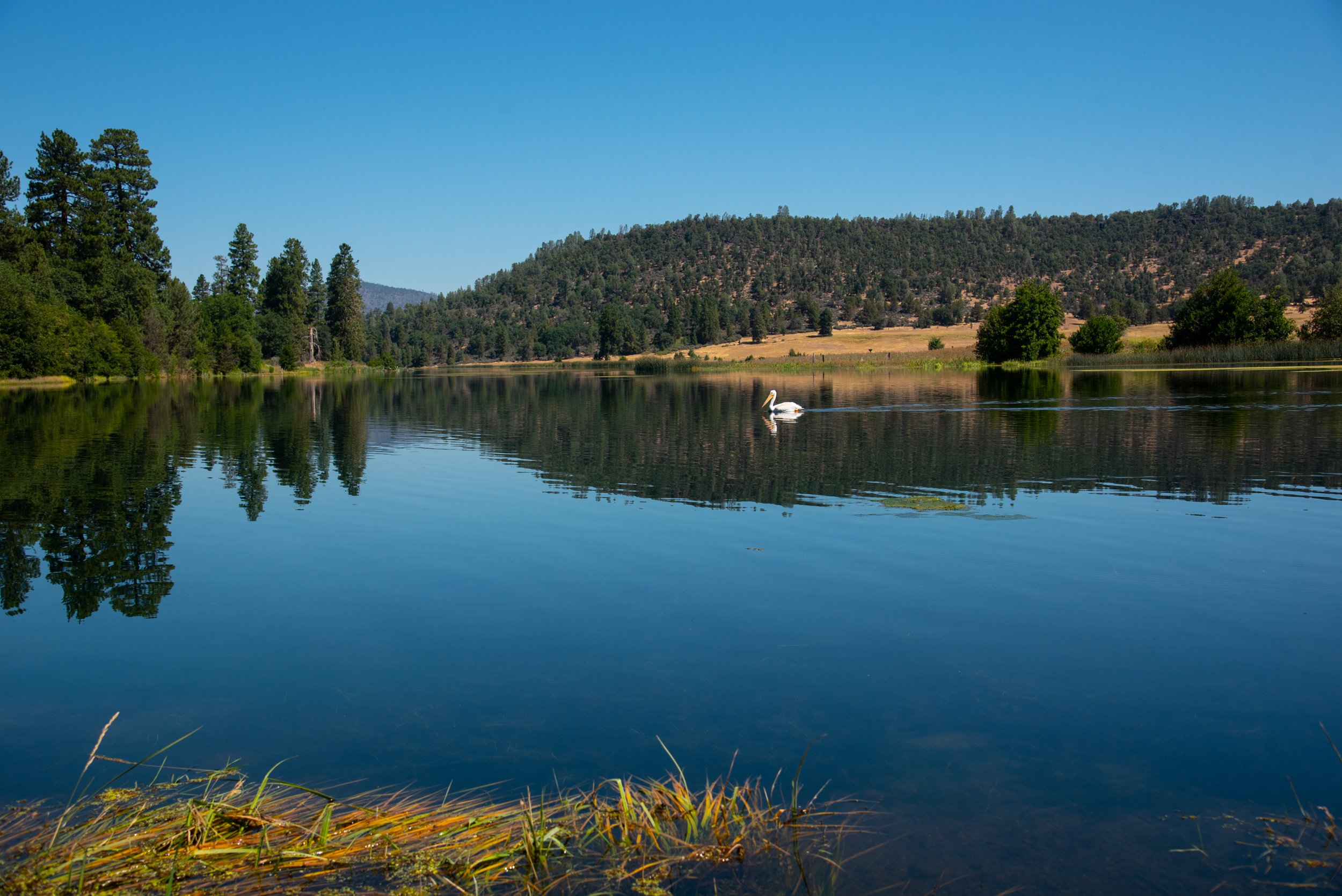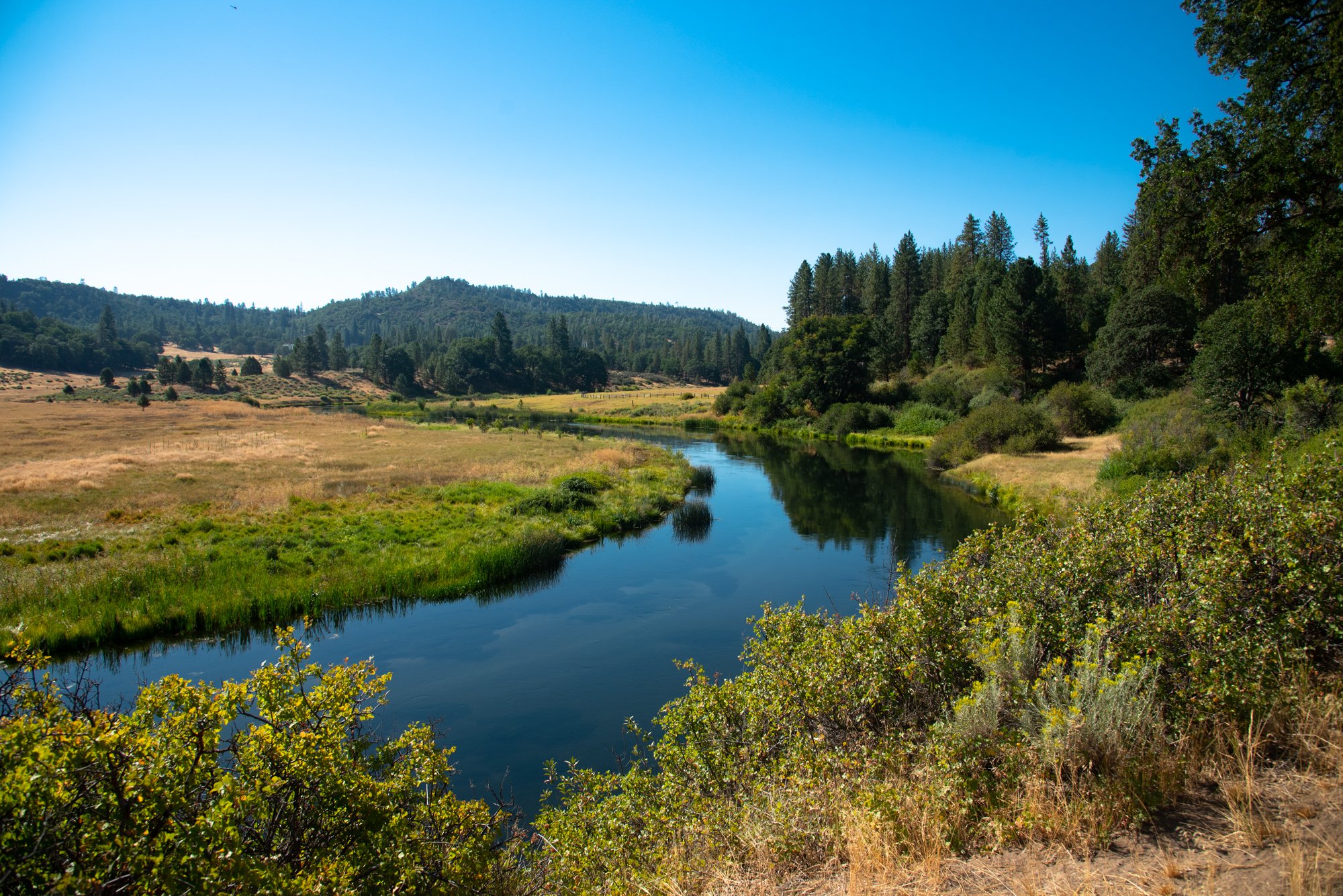Hat Creek Conservation Easement
We are pleased to announce the permanent protection of 1,750 acres along Hat Creek, world-renowned for fly fishing, recreation, and scenic beauty. Spanning from the town of Cassel, north toward the Pit River, the property joins two additional Shasta Land Trust conservation easements, protecting a total of 4,267 acres of contiguous lands along Hat Creek toward the Pit River confluence. The property was conserved in partnership with the Pacific Forest & Watershed Lands Stewardship Council and Pacific Gas & Electric.
The property contains precious water resources, including 2.9 miles of Hat Creek, the entirety of Baum Lake and Crystal Lake, portions of the Rising River and Rock Creek, and expansive wet meadow habitat. These riparian habitats are an essential conservation zone for aquatic species like blue heron and osprey, as well as a variety of endangered and threatened species like bald eagle, bank swallows, Shasta crayfish, rainbow trout, and sculpin. Additionally, the biodiverse property’s Montane hardwood, conifer, ponderosa pine, grasslands, and sagebrush habitats support a variety of native wildlife species.
A popular fly fishing destination, the property contains ecologically important trout habitat along Hat Creek, designated as a “Wild Trout Water” by California Department of Fish and Wildlife. Famous locally and worldwide for its unique trout habitat conditions, the Hat Creek Wild Trout area provides some of the best fly fishing in the state, lauded by fly fishing tours and recreational organizations. “The Wild Trout section of Hat Creek begins at Powerhouse #2, where the creek cascades down a long riffle before tapering off into the deep weedy water below. This riffle is probably one of the most popular – and productive – portions of water in the entire state. Every day of the season there are likely to be several anglers working the riffle,” said The Fly Shop’s Mike Mercer, in reference to the Wild Trout Water portion of their Hat Creek fly fishing tour.
The ecologically precious habitats present on the property have led to several restoration projects by numerous agencies to support endangered and threatened species. The Rock Creek Restoration Project led by the Spring Rivers Ecological Sciences, LLC., improved Shasta Crayfish habitat along the upper Rock Creek area, with habitat reconstruction efforts, creek diversions to prevent invasive species threats, and the introduction of Shasta crayfish populations into the enhanced habitat. The Hat Creek Restoration Project led by CalTrout and the Lomakatsi Restoration Project supported wild trout populations with riparian habitat improvements and native ecosystem plantings.
The property’s Crystal Lake Hatchery, maintained by the California Department of Fish and Wildlife, also supports local fish populations with approximately 1.5 million fish reared annually on-site. Eagle Lake Rainbow Trout, Brown Trout, Rainbow Trout, and Eastern Brook Trout species are bred and raised at the hatchery and distributed to approximately 60 lakes and streams in northern California. The exceptional fishing available on the property can be accessed by the public via Crystal Lake, Baum Lake, and trails along the Rising River and Hat Creek.
In addition to fishing, the property’s many other recreational opportunities are accessible to the public. Cassel Campground offers 27 sites suitable for RV and tent camping located near the property’s numerous lakes and waterways. These aquatic habitats provide opportunities to see native and migratory waterfowl, with multiple picnic sites along a noteworthy pelican-inhabited area of Baum Lake. Hikers can enjoy numerous trails including the historic Hat Creek Carbon Bridge Trail, a scenic trail spanning along the rolling hills and gentle currents of Hat Creek, in addition to 4.3 miles of the Pacific Crest Trail contained within the property. Swimming, canoeing, and kayaking are also popular activities.
We are thankful for our partners at the Stewardship Council and PG&E for their support of this conservation project. This property of immense ecological, recreational, economic, and scenic values can remain safe from the risk of development forever!


